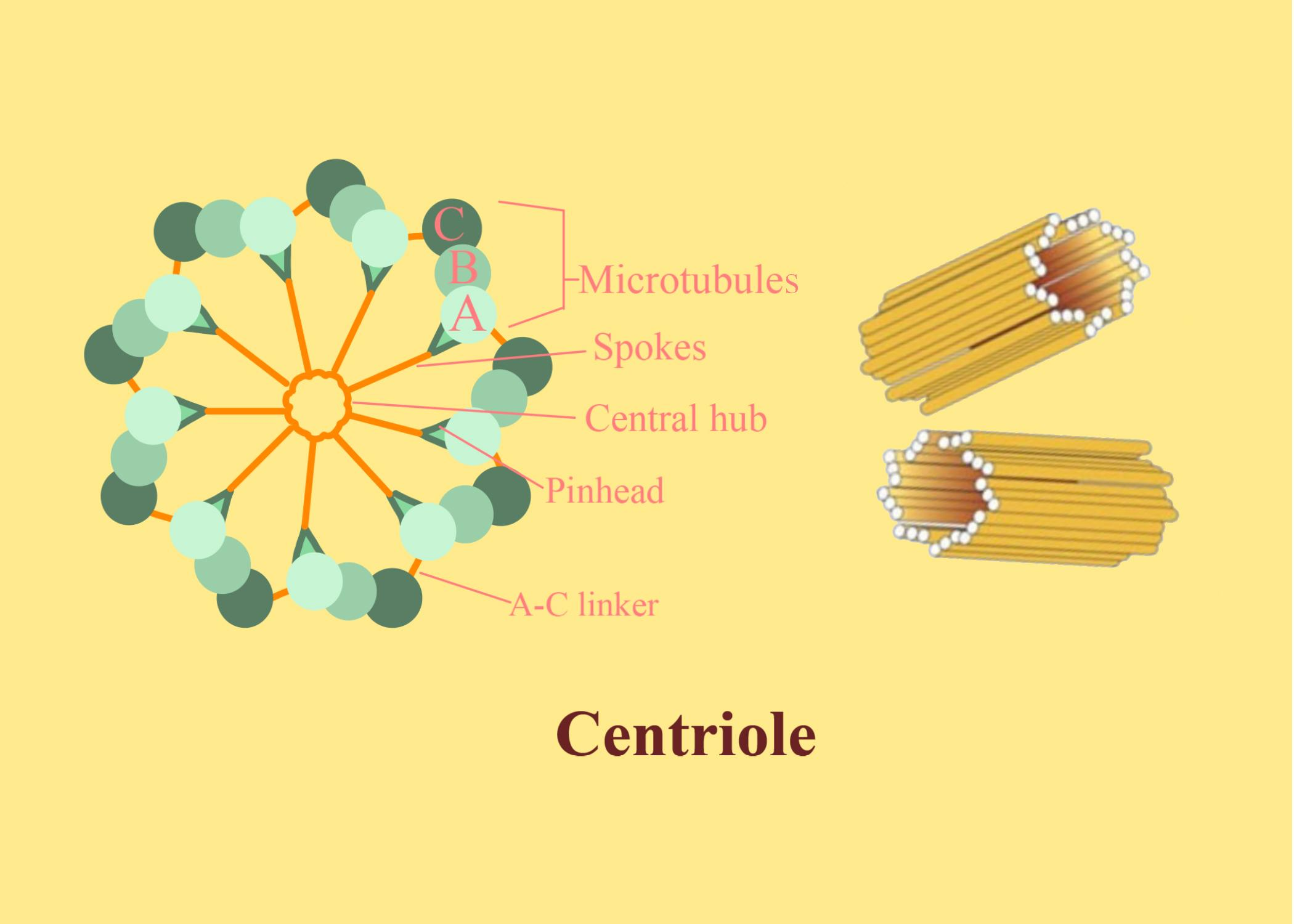
Centriole/Centrosome take part in
(a) Nucleolus formation
(b) Start of cell division
(c) Cell plate formation
(d) Spindle formation
Answer
549k+ views
Hint: Centrioles are the microtubular structure which duplicates to form a pair of centrioles which exist at the right angle to one another. These are found in eukaryotic cells, complex centrioles are known as centrosomes.
Complete answer:
Centrioles take part in cell division by forming spindle poles. In the metaphase of cell division, the disintegration of the nuclear envelope results in the formation of a fibrous body called spindle apparatus. Spindle fibres from spindle apparatus get attached with the centromere and separate the chromatids of a chromosome. The chromosome moves toward the pole and helps in cell division. It also forms basal bodies of cilia and flagella and in spermatozoan the one centriole from the pair gives rise to the axial filament.
Additional information:
The centriole is a cylindrical structure made up of protein tubulin. They are 0.3-0.5 micrometre in length and 0.15 micrometre in diameter which is made up of nine triplets of microtubules in which central microtubules are absent. Triplets are embedded inside an amorphous matrix and place parallel to one another. Adjacent microtubules are connected by linkers with the centre of centriole occupied by the rod-like mass hub which is made up of protein. Microtubules of centrioles are surrounded by an amorphous sphere of dense pericentriolar satellites. Centrioles do not consist of its DNA but still, it form copy of new centrioles with the help of pericentriolar satellites. At the time of cell division pairs of centrioles separate and migrate toward opposite ends. Cillogenesis occur at the time of cilia development in which centrioles divide many time and orient along the surface of the cell to form basal bodies.
Centrioles do not take part in cell plate formation in plant cells and nucleolus formation in the eukaryotic cell.
So, the correct answer is option (d) ‘Spindle formation’.
Note: Cilia, flagella and centrioles are made up of microtubules which possess nine peripheral fibrils of microtubules. All the three help in cell movement but centriole show movement to a limited extent inside the cell during cell division.

Complete answer:
Centrioles take part in cell division by forming spindle poles. In the metaphase of cell division, the disintegration of the nuclear envelope results in the formation of a fibrous body called spindle apparatus. Spindle fibres from spindle apparatus get attached with the centromere and separate the chromatids of a chromosome. The chromosome moves toward the pole and helps in cell division. It also forms basal bodies of cilia and flagella and in spermatozoan the one centriole from the pair gives rise to the axial filament.
Additional information:
The centriole is a cylindrical structure made up of protein tubulin. They are 0.3-0.5 micrometre in length and 0.15 micrometre in diameter which is made up of nine triplets of microtubules in which central microtubules are absent. Triplets are embedded inside an amorphous matrix and place parallel to one another. Adjacent microtubules are connected by linkers with the centre of centriole occupied by the rod-like mass hub which is made up of protein. Microtubules of centrioles are surrounded by an amorphous sphere of dense pericentriolar satellites. Centrioles do not consist of its DNA but still, it form copy of new centrioles with the help of pericentriolar satellites. At the time of cell division pairs of centrioles separate and migrate toward opposite ends. Cillogenesis occur at the time of cilia development in which centrioles divide many time and orient along the surface of the cell to form basal bodies.
Centrioles do not take part in cell plate formation in plant cells and nucleolus formation in the eukaryotic cell.
So, the correct answer is option (d) ‘Spindle formation’.
Note: Cilia, flagella and centrioles are made up of microtubules which possess nine peripheral fibrils of microtubules. All the three help in cell movement but centriole show movement to a limited extent inside the cell during cell division.

Recently Updated Pages
Master Class 12 Business Studies: Engaging Questions & Answers for Success

Master Class 12 Economics: Engaging Questions & Answers for Success

Master Class 12 English: Engaging Questions & Answers for Success

Master Class 12 Maths: Engaging Questions & Answers for Success

Master Class 12 Social Science: Engaging Questions & Answers for Success

Master Class 12 Chemistry: Engaging Questions & Answers for Success

Trending doubts
What is meant by exothermic and endothermic reactions class 11 chemistry CBSE

Which animal has three hearts class 11 biology CBSE

10 examples of friction in our daily life

One Metric ton is equal to kg A 10000 B 1000 C 100 class 11 physics CBSE

1 Quintal is equal to a 110 kg b 10 kg c 100kg d 1000 class 11 physics CBSE

Difference Between Prokaryotic Cells and Eukaryotic Cells




